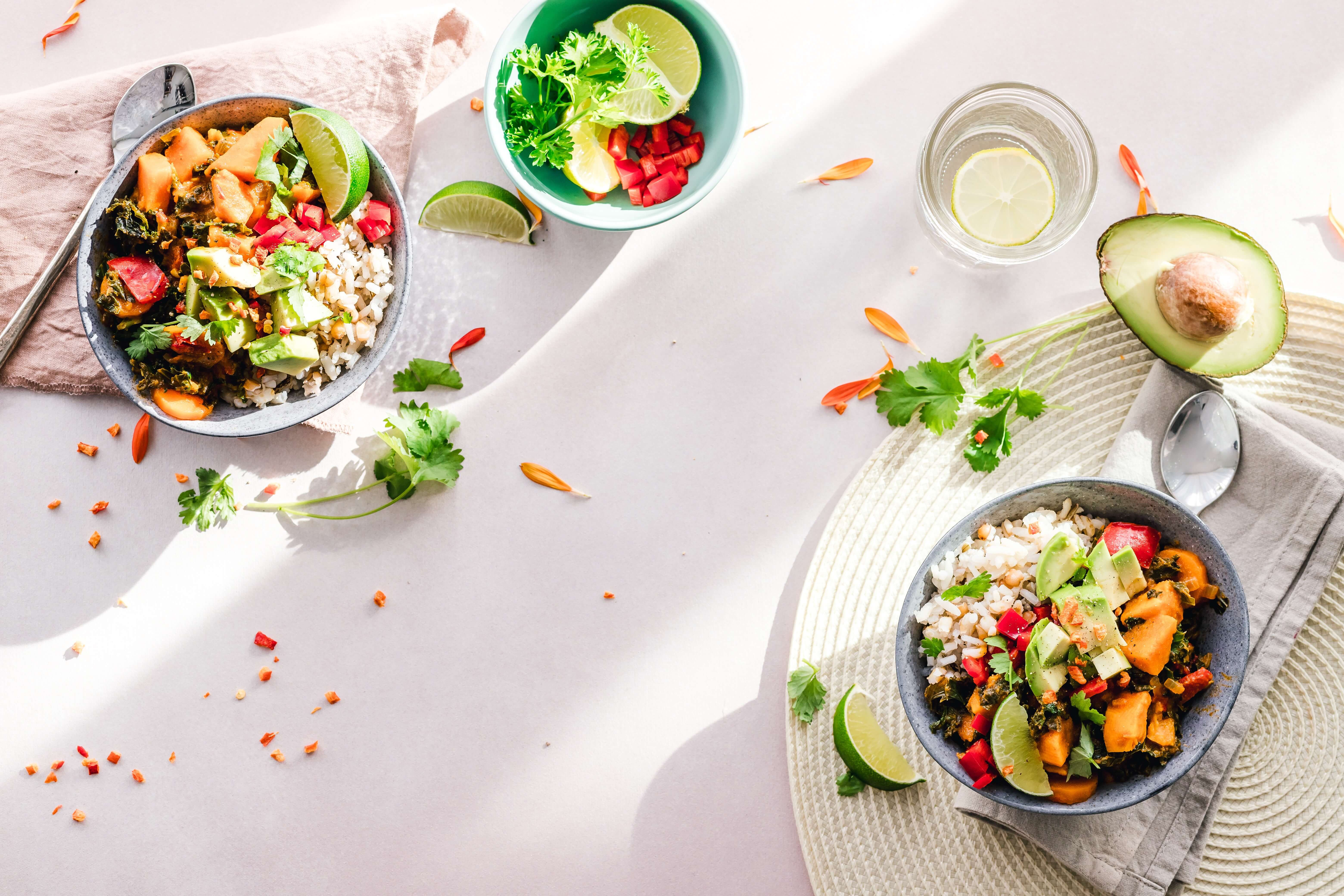Do your energy levels slump around 10-11am and 3-4pm each day, making you reach for coffee or a snack to get more energy?
The most likely reason is that your blood sugar levels aren’t balanced.
What happens is that if you eat meals with too much carbohydrate and not enough protein and fat, you’ll get an energy spike right after eating, followed by feeling tired a few hours later.
Say you have a bowl of cereal for breakfast, or a blueberry muffin (muffins used to be my favourite! I somehow thought this was a healthy breakfast especially given it had blueberries in it. I was devastated when I discovered they weren’t REAL blueberries at all, but imposter ones!).
First, your blood sugar levels rise from all the sugar in your breakfast.
To quickly remove all that sugar from your bloodstream, your body ends up producing too much insulin, which takes too much sugar from your bloodstream.
So your energy plummets, and you might also experience low mood, brain fog/ poor concentration and dizziness.
Frustratingly you wonder ‘why am I so tired?’.
You slept ok, you ate breakfast, but alas, you’re still feeling tired!
And I know (from experience!) you’d do anything to avoid feeling like a zombie at 11am, and it isn’t like you can slip under your desk for a little nap in the afternoon, am I right?!
(I once worked with a guy who did this. He even kept a pillow and doona under his desk! Funnily, we’d often be quiet when he was napping so as not to disturb him. He didn’t last long in the business…)
Even though reaching for coffee or sugar is quick and convenient, both will make you feel even more tired in the long run.
The best way to minimise spikes and crashes in your energy is to limit the fluctuation in your blood sugar levels.
Balancing your blood sugar levels can also help improve your focus and concentration, and prevent mood swings caused by experiencing low blood sugar levels.
So here are 5 ways to get your energy levels high and even all day, without those dreaded energy slumps.
Eat meals with a low glycemic load
Switch out refined carbohydrates like cereals, baked goods, bread and pasta that cause a high level of glucose to be released into the bloodstream (creating what’s called a ‘high glycaemic load’ as described above).
Replace with whole grains like quinoa, buckwheat or brown rice as well as vegetables (high fibre foods) with a moderate amount of good fats and lean protein that limit the amount of glucose released and keep it nice and stable.
When with comes to protein, the best strategy is to…
Eat protein with every meal
So often when I assess a client’s food diary, I find their protein intake isn’t adequate to support their energy levels.
Protein slows down the release of glucose into the bloodstream, therefore helping to keep your energy stable.
Hence you’ll want to eat protein with every meal – especially consuming 30g of protein with breakfast to boost your energy in the morning (check out my protein based Ultimate Green Smoothie Formula for breakfast).
Protein will also make you feel fuller for longer – and alongside being vital to many functions in the body – is needed for the creation of neurotransmitters and hormones which can also impact energy (and of course, mood).
The optimal amount of protein is between 0.8g to 1g of protein per kg of body weight per day.
The best protein sources include fish, lean grass-fed beef, poultry, shellfish and molluscs, tempeh, whey or pea protein powder.
Eat just the right amount of protein for your body. Keep a food journal and track your protein intake to see how much protein works best for you based on your energy levels and mood.
Stay hydrated
So simple, yet so often overlooked!
Dehydration can spike your blood sugar levels and causes fatigue as well as brain fog, which is a common complaint among women.
In fact, being dehydrated by just 2% can reduce mental function, memory creation and concentration.
If your fogginess comes and goes during the day, try drinking water as your first port of call.
The solution is to aim for 2 litres of pimped up water each day.
Pimped up water: add some freshly squeezed lemon, sliced cucumber or berries to your water.
Not only will it add flavour, the minerals and sugars can also help hydrate your cells more effectively than normal water (and you’ll be getting some anti-inflammatory antioxidants too).
Avoid caffeine
Caffeine can worsen blood sugar fluctuation, as it stimulates secretion of the stress hormone cortisol (which in itself can make you tired over the long term and can lead to adrenal fatigue).
Cortisol stimulates more glucose to be released into the bloodstream, triggering insulin to be released and creating the whole cycle mentioned above, leading to a dip in your energy.
One option is to switch out coffee for matcha green tea lattes that have a much smaller amount of caffeine yet most importantly contain L-theanine, which has a calming effect on your body (so you won’t get jitters as you can with coffee) while making you feel more focused.
Some other fantastic options are green tea with ginseng or gingko biloba.
Both will give you energy and can help improve memory and focus. You can buy these from a good health food store (Pukka herbs do these blends).
Eat foods rich in B vitamins
You’ve heard the famous tagline: Berocca gives you back your b-b-bounce?
The benefits of Berocca are down to its B vitamin content which are key nutrients needed for energy production.
So alongside the above blood sugar balancing strategies, B vitamins will help you feel energetic all through the day.
Here are the best sources of B vitamins:
- Meat and fish
- Mushrooms, green leafy veg, berries
- Avocado
- Nuts, seeds – sunflower seeds, sesame, almonds, walnuts
- Brown rice
- Eggs
- Beans and pulses
- Oats
Here’s a challenge for you – make green leafy vegetables a quarter of each of your meals.
This one strategy can make a dramatic impact to your energy levels, and is often the first step I suggest women take to boost their energy.
Not only do leafy greens provide B vitamins, they also provide fibre, magnesium, calcium, zinc, as well as vitamins C, E, and K!
All of these nutrients in some way positively influence your energy levels, not to mention your overall health (think skin, brain, hair and immunity).
Green leafy vegetables include broccoli, Brussels sprouts, spinach, kale, chard, silverbeet, watercress, kohlrabi, asparagus, cabbage and spring greens.
So, what’s the first step you’ll take to stabilise your energy levels?


